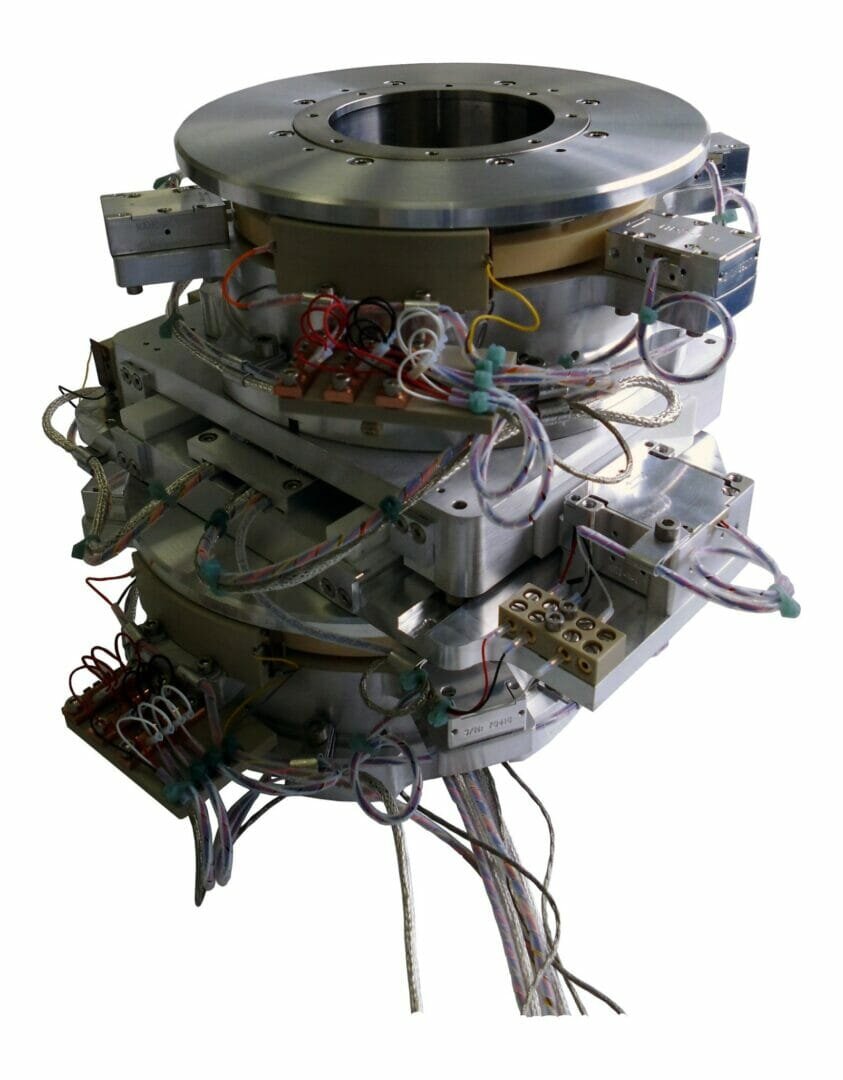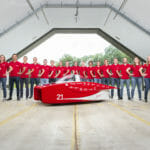In 2015 Heason Technology, the UK motion control system integrator, designed, built and supplied a very special three-axis vacuum compatible and completely non-magnetic micropositioning manipulator that was custom manufactured for Physikalisch-Technische Bundesanstalt (PTB), the German national metrology institute. The manipulator was used as part of the enabling technology for the world-wide Avogadro Project that was formed to redefine the kilogram as the SI unit of mass in terms of the Planck constant and the atomic mass of Silicon-28. On the 20th May 2019, on World Metrology Day, the global metrology community formally announced the new definition, replacing the constant based on the physical artefact known as the international prototype kilogram (IPK) with a much more precise, natural and stable definition that will not change over time. Whilst everyday use of the kilogram will be totally unaffected, the new definition has significant benefits in measurement and calibration for science and industry. Heason Technology continues to support the ongoing work to maintain the new definition with the design and supply of an additional twoaxis module that has been added to the original manipulator.
Heason’s manipulator is used to microposition pure Silicon-28 spheres for synchrotron beam X-ray spectroscopy and fluorescence analysis in a vacuum chamber. These one kilogram spheres measure approximately 93.6 mm diameter and are produced with meticulous precision with a total roundness delta of less than 50 nanometres. They are believed to be the roundest objects in the world and by determining the exact number of atoms they contain in relation to their volume, the sphere’s mass can be affirmed with an exceptionally and never before realised standard uncertainty. However, even minute amounts of surface contamination on the spheres could contribute to an increase in their mass at such extreme levels of precision which resolves to a few millionths of a gram. The X-ray analysis is used to make sure that the surface layers of the sphere are entirely free of contamination before they are transferred in a sealed container and still under vacuum conditions for the mass determination analysis.
For the original three-axis manipulator, Heason Technology worked closely with PTB – one of many international metrology research organisations that have collaborated over several years on the Avogadro Project with research partners in Italy, Belgium, Japan, Australia and the USA. When, in 2018, PTB supplied silicon-28 spheres to the Taiwanese R&D organisation ITRI (Industrial Technology Research Institute), there was a need for additional sphere manipulation to match ITRI’s requirements and allow its more universal use in various vacuum chambers. Heason Technology were called in and a new module was added to the original three-axis manipulator design; integrating a rotary and vertical micropositioning module that included a three-point support cradle for the sphere.
The completely non-magnetic five-axis manipulator features piezo-ceramic motor drives for all axes, supplied by Nanomotion through Heason Technology. Servo position feedback is taken care of using optical rotary and linear encoders from Numerik-Jena with glass disks integrated into the assembly closest to the optimum point of measurement. The original three-axis manipulator comprises base and upper rotary axes with 370º and 110º travel respectively, whilst a central horizontal linear stage has 55 mm travel. With specifications including angular positional repeatability of 0.01 degrees and a linear bi-directional repeatability of 10 microns, the design required extremely tight radial and axial runout values for the rotary stages and equally limiting pitch, yaw and roll values for the linear stage. The new two-axis module required similar specifications and Heason have measured the overall mechanical precision of all five axes to within 10 microns – without any kind of software error mapping – which is well inside the required specifications.
To complete the non-magnetic material prerequisite throughout the assembly, ceramic ball-type caged bearings, an aluminium support structure and stage housing, as well as vacuum compatible materials such as Peek are specified throughout. Vacuum compatible terminal block connections and all cabling is arranged with simple cable management outside of the manipulator housing. Designed for up to 10-9 bar vacuum levels, the manipulator includes sufficient air gaps and spacing to allow trouble-free operation and is subjected to up to 120 ⁰C for outgassing. The restricted vacuum chamber volume used for the synchrotron beam and transfer system further influenced the complexities encountered in the overall design.
Heason Technology enjoys a high reputation in the synchrotron science community for beamlinebased research with many successful motion systems installed in prestigious sites including Diamond Light Source – UK, Rutherford Appleton Laboratory – UK, Brookhaven National Laboratory – USA, Synchrotron Soleil – France, and PTB – Hamburg. These systems typically call for vacuum compatibility and many also involve the sole use of non-ferromagnetic materials to ensure trouble-free sensor measurement.
Heason’s distribution partnerships with specialised motion component suppliers and its own inhouse design and build capability, plus dedicated support and technical expertise, all combine to make certain that its precision mechanical systems, motion control electronics and software systems meet and exceed customer requirements. Projects begin with and continue through close cooperation with research scientists and engineers from the initial design concept phase, through to approval, installation, lifetime service and support – with comprehensive acceptance testing, documentation, training and site visits.








